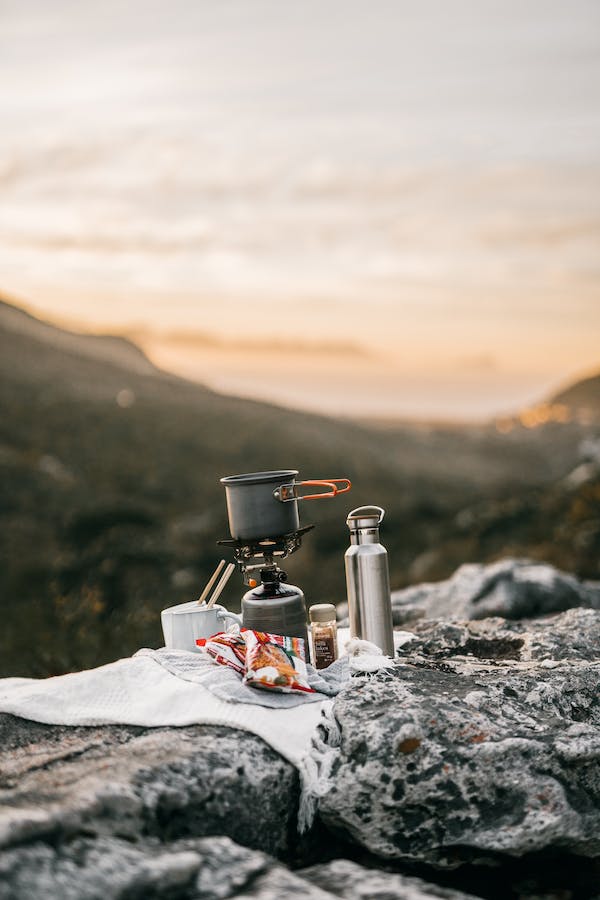You will need food when you go hiking or camping in the mountains. It is nice to stuff your backpacks with essential things like food and water to survive the long and exhausting hike. Also, you would also like to cook to save yourselves from hunger. It happens especially when you plan on staying longer in the mountains. However, cooking in the mountain is way different from cooking at home because of the change in elevation, atmospheric pressure, and many more. So, before going on a hike, you must learn about proper ways to make food when you are above sea level. Do not worry because we got you! Here are some cooking tips for the mountains.
COOKING TIME
It is harder to cook food in the mountain. The higher the altitude, the lower the atmospheric pressure becomes. Since the atmosphere is drier, the liquids will evaporate faster. It results in the need to change cooking methods. As the air pressure falls, the boiling point of the water also falls 1-degree Fahrenheit every time the elevation increases 500 feet. A lower boiling point indicates that the water will cook off more rapidly and at a lower temperature. It would also mean that any food that needs boiling, simmering, and other moist-heat cooking methods take longer to be fully cooked.
Cooking using any moist-heating methods will need 25% more cooking time. Add a quarter to your usual cooking time to ensure that you properly cook your food. Remember to increase the cooking time and not the temperature of the heat. It will only make your food dried out.
KEEP YOUR FOOD COVERED
To retain moisture in your food, you must always keep the pan tightly covered while cooking. You might also want to cover the dishes after cooking and eating to keep your food moist for later.
BRING A FOOD THERMOMETER
A food thermometer could come in handy every time you cook in high altitude places. They can help you confirm the internal temperature of your food to avoid overcooking and undercooking it.
CARRY A TORCH LIGHTER WITH YOU
A torch lighter works better than a non-torch lighter when you are at a very high altitude. Torch lighters are wind-resistant. Aside from creating fire to cook your meals, you can also use them to ignite stubborn kindlings.
USE A LIQUID FUEL STOVE
Camp stoves are good, but they eventually lose their ability to produce fire when you go on a higher elevation. The flame they make would be weaker, and the cooking time would take so much longer. On the other hand, liquid fuel stoves are perfect for cooking in mountainous places. Their fuel may be a lot heavier, but they would not have any issues when brought in higher altitudes. Plus, they are more cost-effective!
IF THE WIND IS RAGING, TAKE IT TO YOUR TENT
If the weather is wild in the mountain and the wind hinders your cooking, you have no other option but to take it inside your tent. There, the wind would not be able to put out your flame, and you could also feel warmer inside. But, be mindful of your actions and follow all advisories for the stove that you are using. Be extra careful to avoid burning your tent and having extensive injuries.
PREPARE THE INGREDIENTS AHEAD OF TIME
Before leaving your house, you must prepare all the ingredients that you need. It will save you some time in preparing and cooking your food when you are in the mountains. Put the measured dry ingredients that you need for a recipe inside one plastic bag, and then you could just put them all in the mixture when you start cooking in the mountains.
BRING SOME INSULATED CONTAINERS
You can also carry some insulated containers containing food that you cooked at home. That way, you could reheat it when you are in the mountains. It will save you some time and effort, and you could also satiate your hunger immediately.
MAKE USE OF YOUR PLASTIC BAGS
You can make use of plastic bags when you go hiking on a mountain. You can partially cook any food at home and put it inside a sturdy and tightly sealed plastic bag. Then you can finish cooking it when you arrive in the mountains. You can also put your marinated meat and then cook them when you are ready to eat. You can also place all the spices you need for cooking inside the labeled plastic bags. That way, you won’t need to bring heavy containers, but you could still be able to spice up your meals in the mountains.

